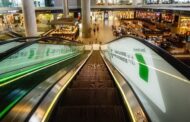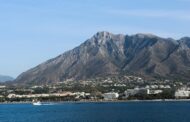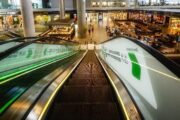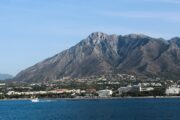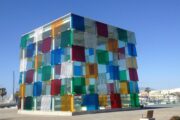Each summer, La Cala de Mijas—the picturesque coastal village nestled between Marbella and Fuengirola—comes alive with one of its brightest festivals: the Feria de La Cala de Mijas. More than a mere carnival, this vibrant celebration fuses Andalusian culture, agricultural roots, and seaside ambience into an unforgettable week-long experience. The Fair reflects the heart of the community, blending tradition and modernity in a way that honors history and welcomes new generations to its fiestas.
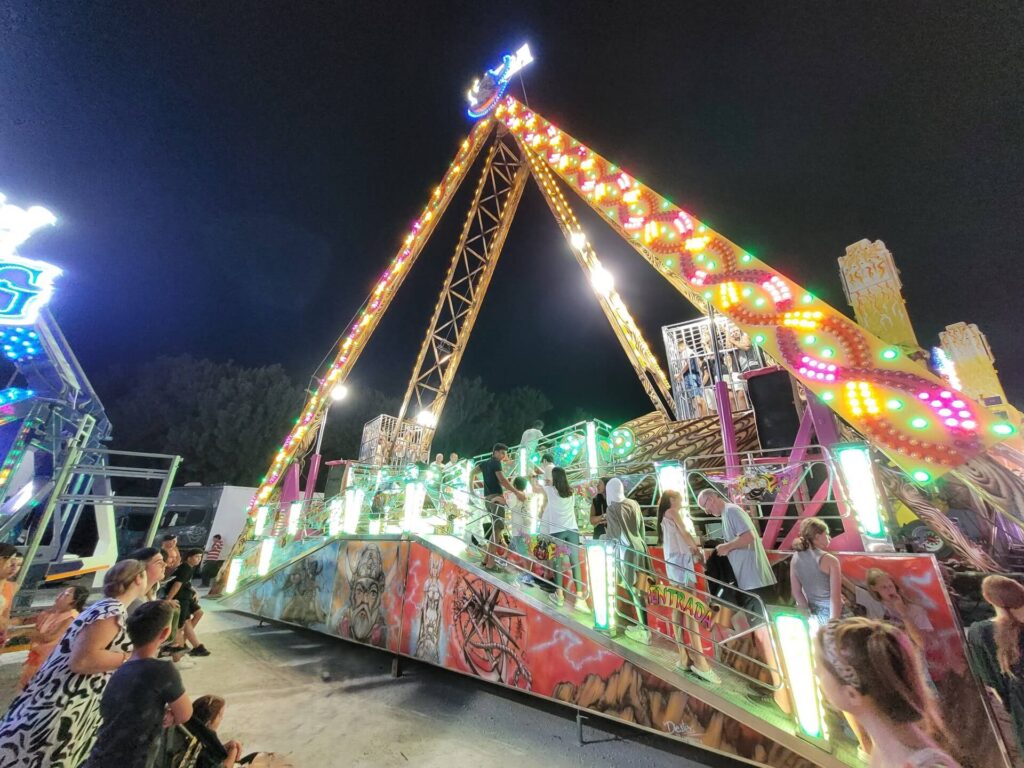
Looking Ahead: The 2025 Feria and Its Anticipated Highlights
Excitement is already building for the Feria de La Cala de Mijas 2025, which is set to take place from the 22th to the 27st of July. These dates, falling at the height of the Andalusian summer, promise a week of sun-soaked festivities that will once again transform the village into a hub of color, sound, and tradition. Organizers have hinted at a stellar lineup of live acts for this year’s edition, with renowned flamenco singers, pop fusion bands, and even an international guest artist expected to grace the main stage on select nights. Rumors include a special performance by a celebrated Andalusian dance troupe on opening night and an emotional closing concert featuring one of Spain’s most beloved pop-rock groups. With each passing year, the fair grows in ambition and scope, and the 2025 edition is shaping up to be one of the most memorable yet, drawing visitors from across the Costa del Sol and beyond to experience La Cala’s unique blend of heritage and entertainment.
Origins and Cultural Heritage
Set against the backdrop of Malaga’s sun-drenched coast, the Feria de La Cala de Mijas traces its origins back to the 19th century. Initially conceived as a livestock and agricultural fair, it provided a venue for local farmers to trade produce, wines, and domestic animals. Over time, the event evolved into a broader celebration of regional identity—complete with music, dance, and gastronomy—while preserving its rural charm.
For residents, the Fair remains a tribute to the village’s agrarian past. Stallholders still offer fresh produce and traditional pastries, while the exhibit of horses and livestock highlights the farming legacy of Mijas. Even as the event incorporates contemporary entertainment, it avoids losing its roots, ensuring each new edition pays homage to the coastal community’s origins.
Opening Day and Ceremonial Launch
The Feria begins with a lively inauguration ceremony. Local dignitaries are invited to cut a red ribbon beneath the fairground’s ornate entrance gates, accompanied by fanfare from marching brass bands and local folklore dancers. This moment marks the simmering excitement that builds in the streets and plazas, welcoming visitors and residents alike into the festive realm that will dominate La Cala’s character for the next several days.
The official opening reverberates throughout the village, signaling the start of daytime rides, evening concerts, and nightly flamenco parties in the casetas. Families gather along the main thoroughfare as costumed dancers twirl, children laugh on carousels, and tourists marvel at the age-old combination of rustic celebration and coastal resort glamour.
Casetas and Community Gathering
A defining feature of the Feria de La Cala de Mijas is its network of casetas—temporary marquees that line the main promenade and plaza. These structures belong to local families, associations, bars, and clubs. Each caseta features unique decorations, hospitality, and a spirit of conviviality.
Throughout the week, casetas serve traditional tapas, local wines, and fizzy Rebujito—a delightful mix of wine and soda essential to the Feria’s experience. They double as venues for socializing by day and dancing through the night. Unlike the closed, ticketed casetas found in larger city celebrations, La Cala’s are generally welcoming to all, inviting visitors to immerse themselves in authentic coastal Andalusian life without barriers.
Rhythm and Dance: The Heartbeat of the Fair
Music and dance fill the air at the Feria de La Cala de Mijas. Flamenco, sevillanas, and rumba rhythms echo from every corner, welcoming novices and enthusiasts to dance along. Professional artists and local talents provide performances in central casetas during key evenings, while sunshine-lit afternoons see impromptu gatherings of dancers and singers in shaded corners of the festival area.
For many locals, dancing at the Fair is akin to a festive ritual. Their manicured attire—flowing flamenco dresses and traditional suits—aloft amidst laughter and song, brings a sense of heritage to the event. Daylight flamenco sessions set the tone for evenings rich with live performances, where seasoned artists and rising stars light up the stage.
Gastronomy and Local Flavors
The Feria offers a gastronomic tapestry of Mijas’s regional flavors. Traditional dishes feature predominantly: skewers of grilled meats seasoned with salt and paprika, hearty stews, and fresh seafood tapas. Sweet delights like “torrijas” (Andalusian-style French toast) and locally produced almonds often complement savory offerings.
Street stalls near the fairground complement restaurant options in the village, giving visitors an all-day culinary journey. The balanced menu of seafood, meat, pastries, and drinks like fino sherry, manzanilla, and rebujito provide a rich taste of Andalusian summers.
Family Fun and Leisure Attractions
For families, the Feria de La Cala de Mijas is a haven of lighthearted entertainment. A free or modestly priced funfair hosts rides and games that appeal to all ages: Ferris wheels offer dazzling views of the coast, bumper cars add laughter-filled chaos, and tilt-a-whirls bring nostalgic joy.
Gaming booths let children win small toys while older visitors test their luck. Evening promenades along the illuminated rides create family memories against the coastal sunset. Although the festivities occur in a tight village layout, they remain safe and manageable, encouraging cross-generational participation in a relaxed setting.
Equestrian Displays and Livestock Heritage
The echoes of the Feria’s agricultural roots reverberate through its equestrian events and livestock exhibitions. Local breeders showcase their prized animals, while horses gallop and riders perform traditional Andalusian carriage processions along the main avenues. The sight recalls the region’s rural past and the important role horses played in everyday life.
Visitors can appreciate the craftsmanship of the riders’ attire—embellished riding boots, brocaded jackets, and decorative saddlery. These equestrian highlights culminate in a spectacular parade that charms onlookers and underscores La Cala’s blend of rural legacy with coastal leisure.
Evening Concerts and Live Entertainment
As the sun sets over the Mediterranean, the Feria de La Cala ramps up again with electrifying live music. Open-air stages host concerts that range from flamenco and pop flamenco fusion to cover bands playing Spanish and international hits. Some nights are dedicated to specific genres—alongside impromptu sessions in the streets—creating an inclusive musical atmosphere.
Local artists often perform alongside invited professionals, offering a space where tradition and innovation meet. Every night brings new surprises, as attendees dance under festoon lights, with the glow of the fairground illuminating the emotional connections music fosters among families, friends, and first-time visitors.
Cultural Exhibitions and Workshops
Beyond dance and song, the Feria invites visitors to explore Andalusian culture through workshops and exhibitions. Artisans set up stalls to demonstrate crafts like ceramics, leatherwork, and embroidery. These demonstrations allow visitors to purchase handmade items and witness centuries-old traditions in action.
Daytime workshops encourage participation from all ages. Whether learning flamenco steps, tasting local olive oils, or making simple ceramics, these interactive sessions deepen the cultural experience. The workshops foster creativity and forge lasting memories of the village’s rich artistic legacy.
Candlelit Procession and Religious Tradition
While the Feria is largely secular and festive, La Cala also honors its religious roots. Near the end of the week, a candlelit procession winds through the village’s streets, invoking peaceful reflection. This solemn ritual honors the local patron saint and echoes La Cala’s historic connection to religion.
Pious locals carry candles and venerate the statue of the Virgin or saint, followed by gentle hymns that contrast the jubilant Feria atmosphere. The procession creates a moment of unity, reminding participants of the event’s deeper significance rooted in faith and local tradition.
Economic and Social Impact
The Feria de La Cala de Mijas provides more than cultural enrichment—it’s a vital economic and social event. Local hotels and guesthouses see full occupancy as Spanish and international visitors descend upon the village. Restaurants, bars, and shops experience heightened business volumes thanks to the festival’s cross-generational appeal.
Equally important is the social cohesion the Feria inspires. Working together to set up casetas, organize rides, and curate programming, locals strengthen communal identity. Many families pass down roles and traditions across generations, ensuring the village retains its character amidst increasing tourism.
A Community-Focused Festival
The Feria stays rooted in community values despite its growing reach. Many casetas and stands contribute their proceeds to local charities or community projects. Schools, sports clubs, and cultural associations collaborate year-round to ensure the festival resonates with current values while preserving history.
Local government provides free or reduced-cost spaces for youth ensembles and older community groups, welcoming those who might otherwise feel excluded from large-scale festivals. This focus transforms the Feria from a mere tourist draw into a living, breathing pillar of La Cala de Mijas.
The Final Night: Fireworks and Farewell
The Feria concludes with a spectacular fireworks display that lights up the village and bay. Crowds gather on beaches, promenades, and rooftops, sharing an emotional goodbye to the yearly celebration. As rockets illuminate the sky, live music reaches its peak and flamenco dancers perform impromptu finales in savour of the moment.
The grand finale reflects on the week’s excitement while promising continuity; as the final sparks fade at midnight, locals begin looking forward to next year. Families hug, music drifts away, and quiet returns—though people know that after nine days of celebration, La Cala will never quite be the same again.
A Unique Andalusian Coastal Fiesta
While the Feria de La Cala de Mijas shares elements with other Andalusian fairs, it remains distinctive. Its seaside setting, intertwined with its agricultural heritage and welcoming communal spirit, sets it apart. It offers a celebration where churros and seafood coexist, beaches and horseback rides blend, and music threads through both festive gold and spiritual silver moments.
This blend of tradition and coastal charm makes the Feria an essential part of summer for locals and a unique attraction for travelers. Over its nine days, La Cala de Mijas transforms from a tranquil fishing village into a vibrant stage of cultural pride, community warmth, and joyful entertainment—a perfect mosaic of Andalusian life.
The Feria ends, but its echoes linger: laughter, songs, and the fireworks’ afterglow all bear witness to a village that knows how to honor its past and embrace its future. La Cala de Mijas shows us that when community, culture, and celebration come together, something timeless endures—and that next year, the village will rise again to do it all once more.




